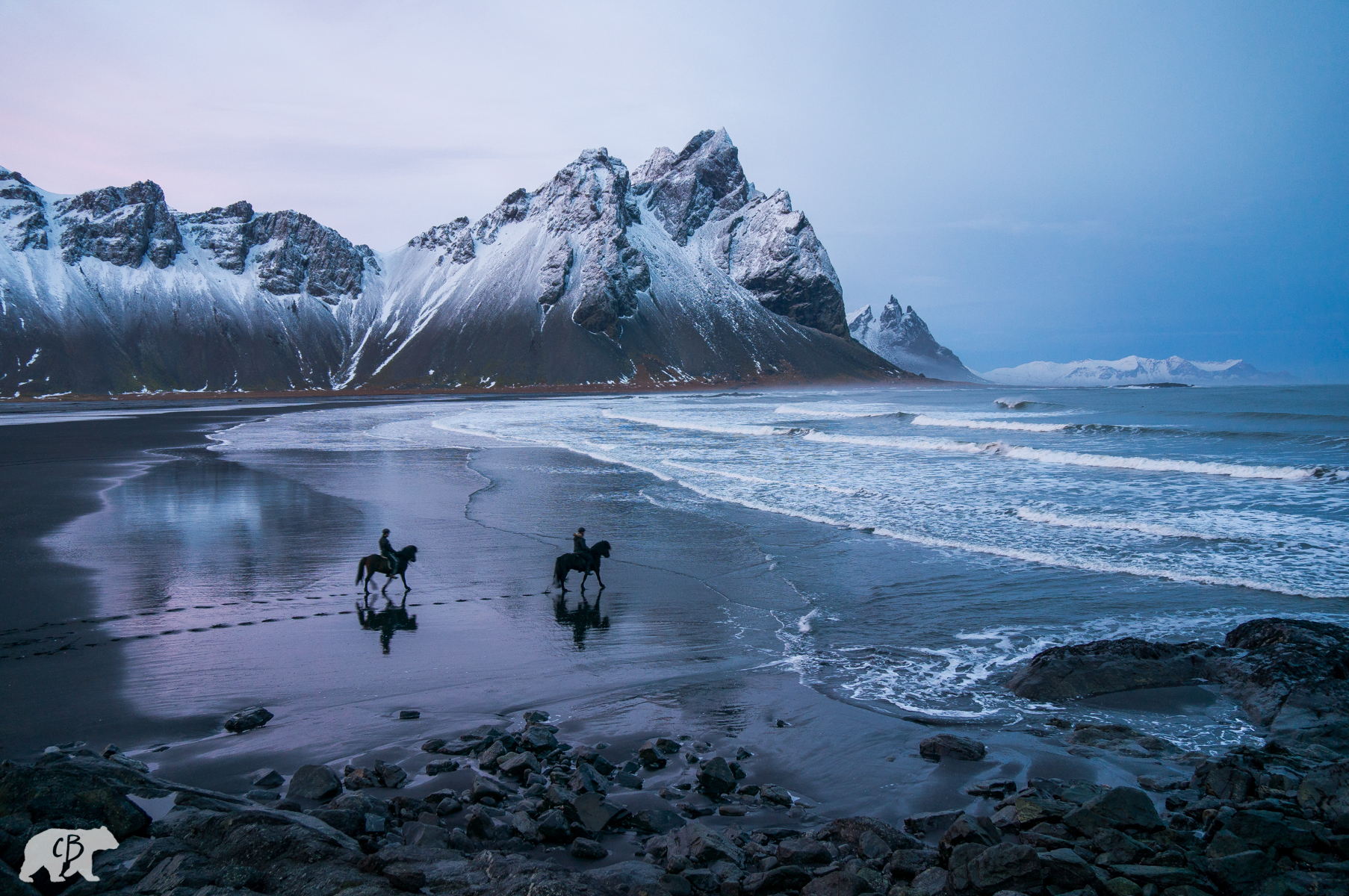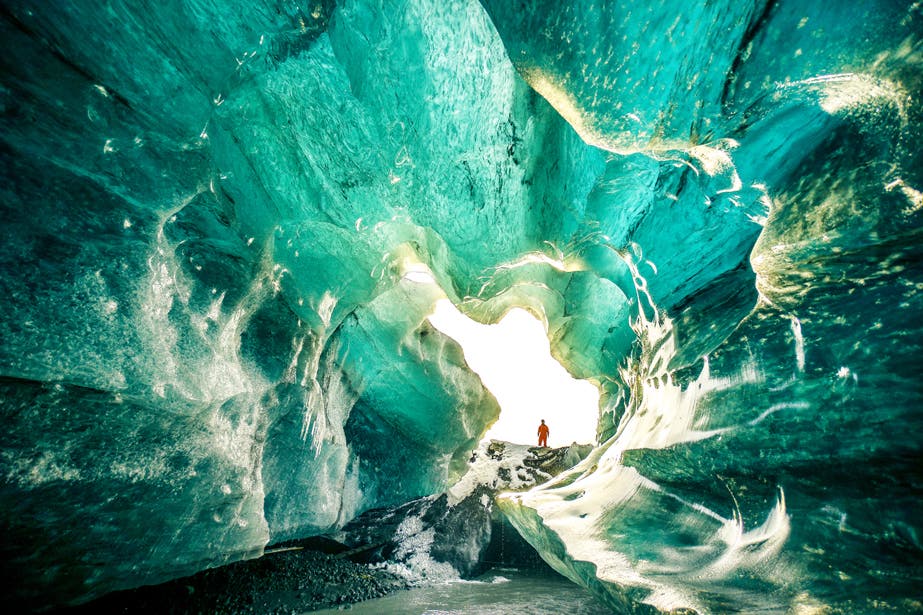Game of Thrones, Cute Horses, and Fishermen's Sweaters: A Case Study of Ecotourism In Iceland
By Elijah Santos
(Photos and film by Chris Burkard, )
Iceland is a rare phenomenon. It’s a country who’s beauty is unrivaled, and because of this people are drawn to it in droves. However, Iceland is also unapologetic about what it is. It’s a rugged, harsh, and unforgiving landscape, with a culture that is welcoming, but also refuses to change. It’s because of this combination of factors that Iceland become one of the best examples of ecotourism in the world. Whether spurred by Game of Thrones or catastrophic volcanic eruptions, ecotourism has brought a decade of economic prosperity to Iceland. At the same time, however this has come at a cost to the natural environment.
Ecotourism is very different from the various other paradigms of tourism. It’s a multifaceted, complex, and interdisciplinary way of approaching the tourism industry. Despite its complexity, it offers one of the best methods for creating a more whole, equitable, and sustainable form of tourism. As a paradigm, it lies on a foundation built out of five main concepts. The criteria that ecotourism is comprised of are: travel to places of ecological interest involving responsible travel to natural areas that conserves the environment, improves the wellbeing of local people, and creates shared knowndge and understanding through interpretation and education of all involved. Obviously this is an extremely broad definition, that affects all tiers of the tourism industry. However, true ecotourism could potentially create a better experience for the travelers, industry workers, indigenous workers, etc.
Iceland’s shift to ecotourism was both gradual, and then all at once. It was fueled by good timing, a dire need for economic growth, and the right paradigms being in place at the right time. In 2016 alone, Iceland saw 1.7 million tourists go through their country, and it’s for good reason too. The past decade of Iceland’s history has not been an easy one. As a recent Skift article put it, “When the global financial meltdown hit Iceland in 2008, it unleashed a series of devastating consequences: an unprecedented banking crisis, a housing market collapse, and increased unemployment. Iceland’s currency plummeted in value and thousands in export-heavy jobs were put out of work” (Sheivachman, 2016). Not long after this, whoever, a disaster turns into a blessing for the island.
Iceland is well known for her world renowned lagoons, beautiful mountain ridgeline, and frozen coasts. However, people’s attraction to the idyllic country first began with the eruption of a volcano. “There were the eruptions of its Eyjafjallajökull volcano in 2010, which grounded flights across Europe” (Baraniuk, 2017). It was such a powerful eruption that flights had to be grounded for das afterwards. This catastrophe closely followed the financial collapse of the country, and was extremely detrimental in the short term. Surprisingly, people found the aftermath of this disaster to actually be an attractor. Iceland used this to their advantage, and offered low cost plane tickets from both the United States and Europe. They also offered a free stop-over in the country for anyone who flew across the Atlantic. These choices caused the number of passengers coming to Iceland to climb significantly over the past decade. In 2016 alone, passenger totals in the Keflavik Airport soared by 40%, from five to seven million passengers.
Iceland’s intelligent tourism tactics took areas that were dead during the financial crisis, and breathed new life back into them. Iceland’s main resource its natural resource. This is precisely what increased the country’s foreign exchange earnings by 12.3 percent in a five year span. That’s a growth rate that most countries rarely if ever see. In this same half decade period, their was a complete restructuring of the economy. Tourism surpassed fishing (previously one of the country’s largest industries), and quickly became the predominant form of economic activity. A recent article stated, "over the last decade, tourism has surpassed both fishing and heavy industry to become Iceland's chief driver of economic growth" (Chapman). In this regard, tourism has saved Iceland from economic ruin. Additionally, they’ve managed to build their economy into a state of symbiosis with ecotourism.
Akureyri, Iceland is the fourth largest town in Iceland at 18,000 residents, and it was rated as the number 1 destination in Europe by Lonely Planet (the company that makes all of the indistinguishable guide books). This town is quite possibly the most quintessential example of ecotourism in Iceland. As lonely planet said when they awarded the title to Akureyri, “Akureyri, in contrast, sits on the north coast under snowcapped peaks at the head of Iceland’s longest fjord. It’s Iceland’s second biggest urban area, and while you shouldn’t expect a big-city vibe (the population is only 18,000), this easy-going place has more buzz than anywhere outside of Reykjavík. It’s also a great base for exploring the north’s green pastures, fishing villages, mudpots, waterfalls, ski fields and whale-filled bays. Signs of the earth’s power - glaciers, volcanoes, lava fields and stacks of basalt - are everywhere, while strange underwater features lure divers and offshore islands are home to colonies of seabirds” (Randle, 2016). It’s descriptions like this that make people want to visit Iceland. However, this is also due in part to their sustainable infrastructure.
Iceland is hands down one of the global leaders in sustainable infrastructure, renewable energy development, and reduction of greenhouse gas emissions. Even Reykjavik, which is home to 40% of Iceland’s residents and is a main tourist attraction, has set a goal of being 100% fossil free by the year 2050 (Randle, 2016). This is a meaningful example for the rest of the world, and a motion that few other countries have made. It’s even more impressive when you consider the fact that they are a tourism focussed economy, which is an industry turban tends to have a large amount of negative externalities pushed off onto the environment. This is one of the things that makes Iceland fit so well into the definition of ecotourism. They’ve made it clear that developed tourism countries can overcome the potential cost and barriers for renewable energy transition.
Iceland is also very careful to preserve it’s delicate cultural heritage. Globalization ahas wreaked havoc on many small countries, but Iceland has somehow managed to walk the fine line of social development and preservation of heritage. The small town of Siglufjordur is home to only 1200 people, and relied entirely on the herring fishing market. After that industry declined, they took advantage of the newly blossoming ecotourism market in order to turn the town’s economy around, “The town has developed a tourism industry through development of a small conference center with a building for meetings, a restaurant, and coffee shop. Volunteers have built a fantastic fishing museum telling the story of the herring industry. Opportunities for tourism also now includes fishing and hiking, and the wonderful hospitality of the local people” (Randle, 2016). They not only preserved their important cultural heritage, but also brought the community together to educate outsiders. This is at the very core of what ecotourism is meant to be.
As with any quick development, however, there are downsides. One of the current issues is that Iceland moved from overfishing, to heavy export of manufactured goods, and now they’ve moved the almost-literal export of nature itself. They’ve begun looking at the environment as a resource. Nature is connected to everything and as such their ecotourism based economy is threatened by their reliance on the “resource” of nature. As a recent article by Michael Chapman put it, “it is the ‘invisible’ threats of climate change and a warming atmosphere, and the very 'visible' threat of wildland violation, that put this organic interrelation into peril” (Chapman, 2017). Iceland faces the very real threat of another economic collapse if their environment starts to degrade. In part this is why they work so hard to preserve it, but they can’t change the actions of other carbon heavy countries.
There is also the potential issue of “overtourism”. An article from Skift outlines this idea well, “Overtourism represents a potential hazard to popular destinations worldwide, as the dynamic forces that power tourism often inflict unavoidable negative consequences if not managed well. In some countries, this can lead to a decline in tourism as a sustainable framework is never put into place for coping with the economic, environmental, and sociocultural effects of tourism. The impact on local residents cannot be understated either” (Sheivachman, 2016). Iceland is currently riding the a fine line, where they could potentially enter this state of overtourism. Welcoming almost 2 million travelers into a tiny island country is bound to cause problems, but this could potentially be avoided if Iceland manages their tourism infrastructure closely. The main issue in regards to overtourism is that Iceland’s infrastructure is from a time when the country only had to serve their year round residents. In particular there needs to be a complete overhaul of the roads in Iceland. They weren’t designed for large amounts of tour busses to use them each day.
This is not to say that Iceland is completely ignoring the issue. They’ve acknowledged that they still need to make infrastructural improvements. As a recent article stated, “As economy is stimulated by tourism, government has more fund to build convenient transportations, which benefits both tourists and locals” (https://11geokellyluo.weebly.com). There are more tourists than ever coming into Iceland, While the number of available hotel rooms in the country grew more than ever last year, with 290 new rooms created, it is still not enough to meet the estimated requirement of 1,400" (Kim, 2016). In order to curb the volume of tourists staying in Reykjavik at one time, “The government recently took steps to limit the availability of Airbnb rooms, for instance. The fear was that residents faced being pushed out of hotspots like downtown Reykjavik due to rising house prices” (Baraniuk, 2017). This is a brave move. Few countries have risked making a decision as bold as this. This move is recent, and as such the long term effects aren’t know. However, it has the potential to create a sustainable carrying capacity for Iceland’s ecotourism industry.
Many of Iceland’s negative externalities can be attributed to growing pains. Iceland’s ecotourism industry isn’t going anywhere any time soon, and hopefully the negative externalities associated with it won’t last forever. Their overall sustainable atmosphere stems from a culture that values protection of their homeland. Iceland is certainly on the forefront of renewable energy infrastructure, ecotourism, and conservationist ideals, but there needs to be more of an emphasis for visitors about the importance of preserving Iceland’s delicate ecosystems. Iceland has managed to capture almost every piece of the the ecotourism definition, but they need that final piece of education in order to prevent visitors from disrespecting ecotourist destinations around the world. Despite this, Iceland has created an admirable model that—while not perfect—has created a more sustainable paradigm and financial stability for many.
Works Cited
Baraniuk, Chris. “Future - The Country That Tourism Has Taken by Surprise.” BBC, BBC, 22 Feb. 2017, www.bbc.com/future/story/20170222-the-country-that-tourism-has-taken-by-surprise.
Chapman, Michael. “Iceland's Troubled Environment.” Guide to Iceland, 5 May 2017, guidetoiceland.is/nature-info/a-darker-shade-of-green-icelands-troubled-environment.
Kim, Soo. “Iceland to Restrict Airbnb Rentals to Cope with Tourism Surge.” The Telegraph, Telegraph Media Group, 2 June 2016, www.telegraph.co.uk/travel/iceland-to-restrict-airbnb-rentals-to-cope-with-tourism-surge/.
Randle, Dr. Dave. “Sustainable Tourism: Lessons from Iceland.” The Huffington Post, TheHuffingtonPost.com, 7 Dec. 2017, www.huffingtonpost.com/dr-dave-randle/sustainable-tourism-lesso_b_12564044.html.
Scheivachman, Andrew. “Iceland and the Trials of 21st Century Tourism.” Travel News, Airline Industry News, & Hotel Industry News by Skift, skift.com/iceland-tourism/.
“Tourism Impacts.” Home, 11geokellyluo.weebly.com/tourism-impacts.html.









No comments:
Post a Comment